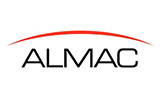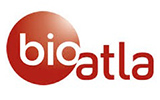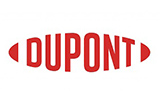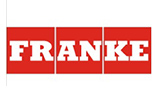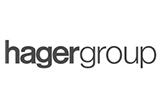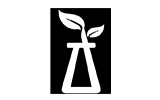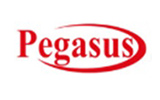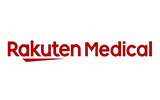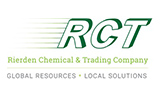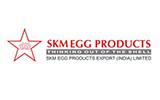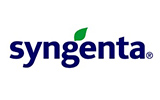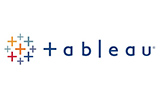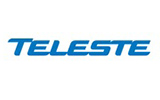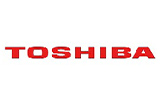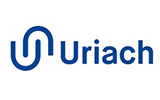1. Research Framework
1.1. Research Objective
1.2. Product Overview
1.3. Market Segmentation
2. Executive Summary
3. Global Isostatic Pressing Market Insights
3.1. Industry Value Chain Analysis
3.2. DROC Analysis
3.2.1. Growth Drivers
3.2.1.1. Rapidly increasing tendency to develop low-cost products with shorter cycle times
3.2.1.2. Rising installation of HIP system to densify 3D printed parts
3.2.2. Restraints
3.2.2.1. High initial investment
3.2.3. Opportunities
3.2.3.1. Growing adoption of HIP by aircraft companies
3.2.3.2. Rising demand for low-cost titanium and alloys from automakers
3.2.4. Challenges
3.2.4.1. Lack of skilled professionals
3.2.4.2. Limitations associated with isostatic pressing tools
3.3. Technology Advancements/Recent Developments
3.4. Regulatory Framework
3.5. Porter's Five Forces Analysis
3.5.1. Bargaining Power of Suppliers
3.5.2. Bargaining Power of Buyers
3.5.3. Threat of New Entrants
3.5.4. Threat of Substitutes
3.5.5. Intensity of Rivalry
4. Global Isostatic Pressing Market Overview
4.1. Market Size & Forecast, 2019-2029
4.1.1. By Value (USD Billion)
4.2. Market Share & Forecast
4.2.1. By Offerings
4.2.1.1. Services
4.2.1.2. Systems
4.2.2. By Type
4.2.2.1. Hot Isostatic Pressing
4.2.2.2. Cold Isostatic Pressing
4.2.3. By Hip Capacity
4.2.3.1. Small-Sized Pressing
4.2.3.2. Medium-Sized Pressing
4.2.3.3. Large-Sized Pressing
4.2.4. By Cip Process Type
4.2.4.1. Dry-Bag Pressing
4.2.4.2. Wet-Bag Pressing
4.2.5. By Application
4.2.5.1. Automotive
4.2.5.2. Aerospace & Defense
4.2.5.3. Medical
4.2.5.4. Precision Machine Manufacturing
4.2.5.5. Energy & Power
4.2.5.6. Others
4.2.6. By Region
4.2.6.1. North America
4.2.6.2. Europe
4.2.6.3. Asia Pacific (APAC)
4.2.6.4. Latin America (LATAM)
4.2.6.5. Middle East and Africa (MEA)
5. North America Isostatic Pressing Market
5.1. Market Size & Forecast, 2025-2033
5.1.1. By Value (USD Billion)
5.2. Market Share & Forecast
5.2.1. By Offerings
5.2.2. By Type
5.2.3. By Hip Capacity
5.2.4. By Cip Process Type
5.2.5. By Application
5.2.6. By Country
5.2.6.1. United States
5.2.6.1.1. By Offerings
5.2.6.1.2. By Type
5.2.6.1.3. By Hip Capacity
5.2.6.1.4. By Cip Process Type
5.2.6.1.5. By Application
5.2.6.2. Canada
5.2.6.2.1. By Offerings
5.2.6.2.2. By Type
5.2.6.2.3. By Hip Capacity
5.2.6.2.4. By Cip Process Type
5.2.6.2.5. By Application
6. Europe Isostatic Pressing Market
6.1. Market Size & Forecast, 2025-2033
6.1.1. By Value (USD Million)
6.2. Market Share & Forecast
6.2.1. By Offerings
6.2.2. By Type
6.2.3. By Hip Capacity
6.2.4. By Cip Process Type
6.2.5. By Application
6.2.6. By Country
6.2.6.1. Germany
6.2.6.1.1. By Offerings
6.2.6.1.2. By Type
6.2.6.1.3. By Hip Capacity
6.2.6.1.4. By Cip Process Type
6.2.6.1.5. By Application
6.2.6.2. United Kingdom
6.2.6.2.1. By Offerings
6.2.6.2.2. By Type
6.2.6.2.3. By Hip Capacity
6.2.6.2.4. By Cip Process Type
6.2.6.2.5. By Application
6.2.6.3. Italy
6.2.6.3.1. By Offerings
6.2.6.3.2. By Type
6.2.6.3.3. By Hip Capacity
6.2.6.3.4. By Cip Process Type
6.2.6.3.5. By Application
6.2.6.4. France
6.2.6.4.1. By Offerings
6.2.6.4.2. By Type
6.2.6.4.3. By Hip Capacity
6.2.6.4.4. By Cip Process Type
6.2.6.4.5. By Application
6.2.6.5. Spain
6.2.6.5.1. By Offerings
6.2.6.5.2. By Type
6.2.6.5.3. By Hip Capacity
6.2.6.5.4. By Cip Process Type
6.2.6.5.5. By Application
6.2.6.6. Belgium
6.2.6.6.1. By Offerings
6.2.6.6.2. By Type
6.2.6.6.3. By Hip Capacity
6.2.6.6.4. By Cip Process Type
6.2.6.6.5. By Application
6.2.6.7. Russia
6.2.6.7.1. By Offerings
6.2.6.7.2. By Type
6.2.6.7.3. By Hip Capacity
6.2.6.7.4. By Cip Process Type
6.2.6.7.5. By Application
6.2.6.8. The Netherlands
6.2.6.8.1. By Offerings
6.2.6.8.2. By Type
6.2.6.8.3. By Hip Capacity
6.2.6.8.4. By Cip Process Type
6.2.6.8.5. By Application
6.2.6.9. Rest of Europe
6.2.6.9.1. By Offerings
6.2.6.9.2. By Type
6.2.6.9.3. By Hip Capacity
6.2.6.9.4. By Cip Process Type
6.2.6.9.5. By Application
7. Asia Pacific Isostatic Pressing Market
7.1. Market Size & Forecast, 2025-2033
7.1.1. By Value (USD Million)
7.2. Market Share & Forecast
7.2.1. By Offerings
7.2.2. By Type
7.2.3. By Hip Capacity
7.2.4. By Cip Process Type
7.2.5. By Application
7.2.6. By Country
7.2.6.1. China
7.2.6.1.1. By Offerings
7.2.6.1.2. By Type
7.2.6.1.3. By Hip Capacity
7.2.6.1.4. By Cip Process Type
7.2.6.1.5. By Application
7.2.6.2. India
7.2.6.2.1. By Offerings
7.2.6.2.2. By Type
7.2.6.2.3. By Hip Capacity
7.2.6.2.4. By Cip Process Type
7.2.6.2.5. By Application
7.2.6.3. Japan
7.2.6.3.1. By Offerings
7.2.6.3.2. By Type
7.2.6.3.3. By Hip Capacity
7.2.6.3.4. By Cip Process Type
7.2.6.3.5. By Application
7.2.6.4. South Korea
7.2.6.4.1. By Offerings
7.2.6.4.2. By Type
7.2.6.4.3. By Hip Capacity
7.2.6.4.4. By Cip Process Type
7.2.6.4.5. By Application
7.2.6.5. Australia & New Zealand
7.2.6.5.1. By Offerings
7.2.6.5.2. By Type
7.2.6.5.3. By Hip Capacity
7.2.6.5.4. By Cip Process Type
7.2.6.5.5. By Application
7.2.6.6. Indonesia
7.2.6.6.1. By Offerings
7.2.6.6.2. By Type
7.2.6.6.3. By Hip Capacity
7.2.6.6.4. By Cip Process Type
7.2.6.6.5. By Application
7.2.6.7. Malaysia
7.2.6.7.1. By Offerings
7.2.6.7.2. By Type
7.2.6.7.3. By Hip Capacity
7.2.6.7.4. By Cip Process Type
7.2.6.7.5. By Application
7.2.6.8. Singapore
7.2.6.8.1. By Offerings
7.2.6.8.2. By Type
7.2.6.8.3. By Hip Capacity
7.2.6.8.4. By Cip Process Type
7.2.6.8.5. By Application
7.2.6.9. Vietnam
7.2.6.9.1. By Offerings
7.2.6.9.2. By Type
7.2.6.9.3. By Hip Capacity
7.2.6.9.4. By Cip Process Type
7.2.6.9.5. By Application
7.2.6.10. Rest of APAC
7.2.6.10.1. By Offerings
7.2.6.10.2. By Type
7.2.6.10.3. By Hip Capacity
7.2.6.10.4. By Cip Process Type
7.2.6.10.5. By Application
8. Latin America Isostatic Pressing Market
8.1. Market Size & Forecast, 2025-2033
8.1.1. By Value (USD Million)
8.2. Market Share & Forecast
8.2.1. By Offerings
8.2.2. By Type
8.2.3. By Hip Capacity
8.2.4. By Cip Process Type
8.2.5. By Application
8.2.6. By Country
8.2.6.1. Brazil
8.2.6.1.1. By Offerings
8.2.6.1.2. By Type
8.2.6.1.3. By Hip Capacity
8.2.6.1.4. By Cip Process Type
8.2.6.1.5. By Application
8.2.6.2. Mexico
8.2.6.2.1. By Offerings
8.2.6.2.2. By Type
8.2.6.2.3. By Hip Capacity
8.2.6.2.4. By Cip Process Type
8.2.6.2.5. By Application
8.2.6.3. Argentina
8.2.6.3.1. By Offerings
8.2.6.3.2. By Type
8.2.6.3.3. By Hip Capacity
8.2.6.3.4. By Cip Process Type
8.2.6.3.5. By Application
8.2.6.4. Peru
8.2.6.4.1. By Offerings
8.2.6.4.2. By Type
8.2.6.4.3. By Hip Capacity
8.2.6.4.4. By Cip Process Type
8.2.6.4.5. By Application
8.2.6.5. Rest of LATAM
8.2.6.5.1. By Offerings
8.2.6.5.2. By Type
8.2.6.5.3. By Hip Capacity
8.2.6.5.4. By Cip Process Type
8.2.6.5.5. By Application
9. Middle East & Africa Isostatic Pressing Market
9.1. Market Size & Forecast, 2025-2033
9.1.1. By Value (USD Million)
9.2. Market Share & Forecast
9.2.1. By Offerings
9.2.2. By Type
9.2.3. By Hip Capacity
9.2.4. By Cip Process Type
9.2.5. By Application
9.2.6. By Country
9.2.6.1. Saudi Arabia
9.2.6.1.1. By Offerings
9.2.6.1.2. By Type
9.2.6.1.3. By Hip Capacity
9.2.6.1.4. By Cip Process Type
9.2.6.1.5. By Application
9.2.6.2. UAE
9.2.6.2.1. By Offerings
9.2.6.2.2. By Type
9.2.6.2.3. By Hip Capacity
9.2.6.2.4. By Cip Process Type
9.2.6.2.5. By Application
9.2.6.3. Qatar
9.2.6.3.1. By Offerings
9.2.6.3.2. By Type
9.2.6.3.3. By Hip Capacity
9.2.6.3.4. By Cip Process Type
9.2.6.3.5. By Application
9.2.6.4. Kuwait
9.2.6.4.1. By Offerings
9.2.6.4.2. By Type
9.2.6.4.3. By Hip Capacity
9.2.6.4.4. By Cip Process Type
9.2.6.4.5. By Application
9.2.6.5. South Africa
9.2.6.5.1. By Offerings
9.2.6.5.2. By Type
9.2.6.5.3. By Hip Capacity
9.2.6.5.4. By Cip Process Type
9.2.6.5.5. By Application
9.2.6.6. Nigeria
9.2.6.6.1. By Offerings
9.2.6.6.2. By Type
9.2.6.6.3. By Hip Capacity
9.2.6.6.4. By Cip Process Type
9.2.6.6.5. By Application
9.2.6.7. Algeria
9.2.6.7.1. By Offerings
9.2.6.7.2. By Type
9.2.6.7.3. By Hip Capacity
9.2.6.7.4. By Cip Process Type
9.2.6.7.5. By Application
9.2.6.8. Rest of MEA
9.2.6.8.1. By Offerings
9.2.6.8.2. By Type
9.2.6.8.3. By Hip Capacity
9.2.6.8.4. By Cip Process Type
9.2.6.8.5. By Application
10. Competitive Landscape
10.1. List of Key Players and Their Offerings
10.2. Global Isostatic Pressing Company Market Share Analysis, 2023
10.3. Competitive Benchmarking, By Operating Parameters
10.4. Key Strategic Developments (Mergers, Acquisitions, Partnerships)
11. Impact of Escalating Geopolitical Tensions on Global Isostatic Pressing Market
12. Company Profiles (Company Overview, Financial Matrix, Competitive Landscape, Key Personnel, Key Competitors, Contact Address, Strategic Outlook, and SWOT Analysis)
12.1. American Isostatic Presses (API)
12.2. DORST Technologies GmbH & Co.KG
12.3. Bodycote PLC
12.4. Engineered Pressure Systems (EPSI)
12.5. Fluitron, Inc.
12.6. Kobe Steel Ltd
12.7. Nikkiso Co Ltd
12.8. Pressure Technology, Inc.
12.9. Shanxi Golden Kaiyuan Co. Ltd
12.10. Kittyhawk Products
12.11. Quad City Manufacturing Lab
12.12. Aerosint SA
12.13. H?gan?s AB
12.14. Kobe Steel Ltd
12.15. Quintus Technologies AB
12.16. Other Prominent Players
13. Key Strategic Recommendations
14. Research Methodology
14.1. Qualitative Research
14.1.1. Primary & Secondary Research
14.2. Quantitative Research
14.3. Market Breakdown & Data Triangulation
14.3.1. Secondary Research
14.3.2. Primary Research
14.4. Breakdown of Primary Research Respondents, By Region
14.5. Assumptions & Limitations
*Financial information of non-listed companies can be provided as per availability.
**The segmentation and the companies are subject to modifications based on in-depth secondary research for the final deliverable


